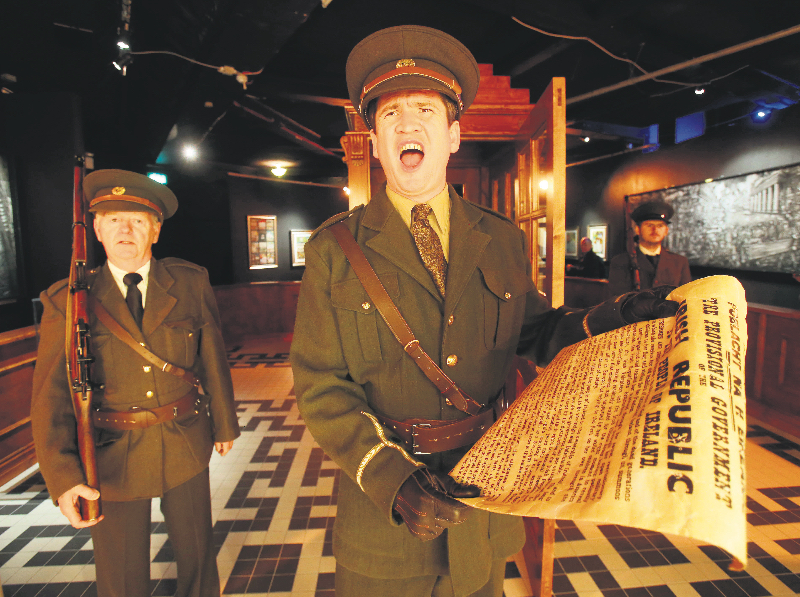IN 1913, the Ambassador Theatre in Parnell Square is where rebels signed up to take part in a rising against British rule.
Fast forward 103 years, and the theatre is home to an exhibition remembering those same rebels who helped shape the future of Ireland.
There are many stories from the 1916 Rising that aren’t taught in schools.
Some have been passed down first hand through the generations, with only a handful of people ever knowing them.
One of the great things about the Easter Rising celebrations is that we get a chance to explore some of those stories that we never learned in school.
Revolution 1916 in the Ambassador Theatre has a number of artefacts, re-enactments and artwork that immerse you in the world of a century ago.
Each piece featured in the exhibition comes with its own unique story.
“We want people to see the exhibition and come away with bits of information they never knew,” said Bartle D’Arcy, curator of the exhibition.
One of the pieces in the exhibition is an old door handle from the GPO.
The building had been renovated just before the Easter Rising, which is one of the reasons why it was chosen as a base, according to Mr D’Arcy.
“Connolly reckoned they wouldn’t bomb the building as they had spent so much money on it,” Mr D’Arcy explained. “They were wrong of course.”
This particular door handle came into the possession of the night watchman of the GPO at the time, who decided to hold on to it as a keepsake. The handle was passed down through his family before its significance was recognised.
There is also an original print of the Proclamation in the exhibition, of which only about 50 remain. Rarer still, is a copy that sits under it, one of several that were printed off by the British soldiers who took over Liberty Hall after the Rising as souvenirs.
The particular copy that features in the exhibition was used in the court marshals following the Rising.
During the trial of Eamon Ceannt, the judge asked him if he signed a particular document, to which Ceannt replied, “the Queen’s name is on a banknote and she didn’t sign that!”
The exhibition is full of little back stories like these, which are brought to life through realistic recreations and re-enactments. For example, at noon each day, anybody in Parnell Square can see an actor playing Pádraig Pearse reading the Proclamation from outside the theatre.
There are also recreations of scenes from the GPO, Moore Street and Kilmainham Gaol during the time.
While walking through ‘Kilmainham Gaol’, you can hear a man whistling ‘Óró Sé do Bheatha Bhaile’.
This is to represent Pádraig Pearse, who supposedly whistled the same tune as he walked to his execution on May 3, 1916.
The exhibition also features artwork depicting the Rising, in celebration of the large number of poets and artists who took part.
This includes a number of portraits of the Rising’s women, and a couple of huge charcoal drawings made by Dubliner Brian Mulvaney, which took him two years apiece to complete.
It is expected that over a quarter of a million visitors will see Revolution 1916: The Original and Authentic Exhibition in the Ambassador Theatre by the time it ends in October.
Eoin Lúc Ó Ceallaigh
